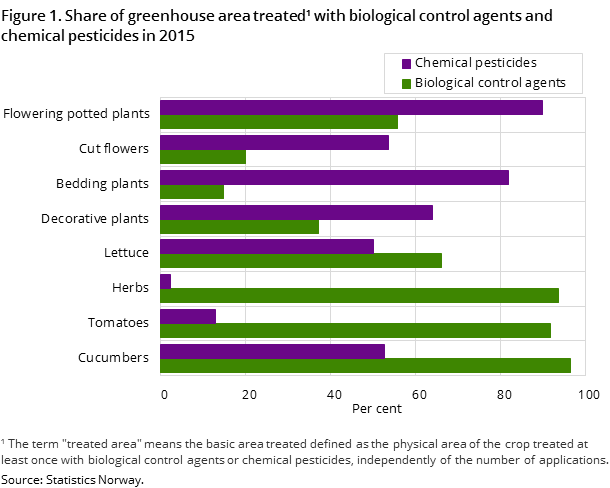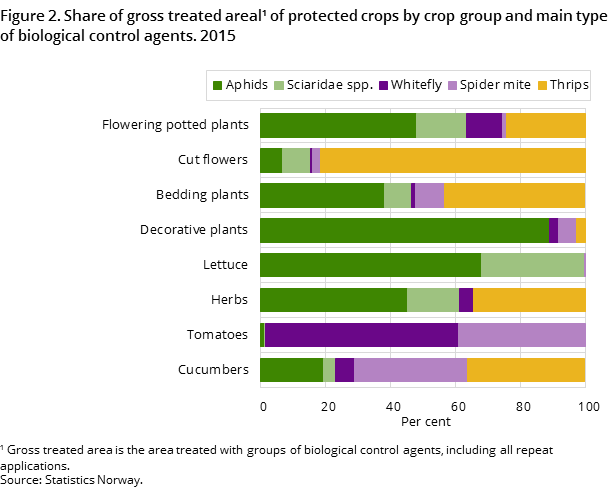Reduced use of chemical pesticides on greenhouse vegetables
Published:
In 2015, biological control agents were applied to 90 per cent of the area of edible crops in greenhouses, while chemical pesticides were used on less than 30 per cent of the area. Within ornamental plants, the corresponding shares were 31 and 83 per cent respectively.
- Full set of figures
- Pesticide use
- Series archive
- Pesticide use (archive)
Most vegetables are treated with biological agents
Examples of biological control agents are insects, fungi and bacteria. For cucumbers, herbs and tomatoes, the share of crop areas treated with biological control agents was 96, 94 and 92 per cent respectively. Within ornamental plants, the average share was 31 per cent. Some areas were treated with both biological control agents and chemical pesticides.
Frequent use of chemical growth regulators in flowers
Growth regulators are mainly used in flowering potted plants. As a whole, growth regulators accounted for more than 47 per cent of the gross area treated with chemical pesticides. Insecticides accounted for 43 per cent and fungicides for 9 per cent. In edible crops, fungicides accounted for 63 per cent and insecticides for 37 per cent of the gross pesticide-treated area. Insecticides were most widespread on tomatoes and lettuce, while fungicides dominated on cucumbers.
Contact
-
Berit Bjørlo
-
Per Amund Aarstad
-
Statistics Norway's Information Centre


